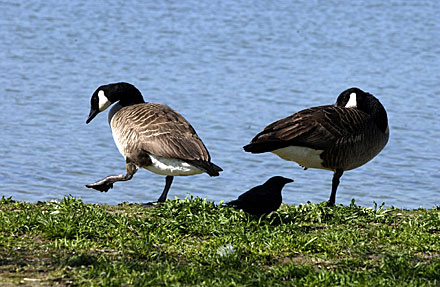Audubon expands its conservation activities in Maryland and DC with the recognition of 14 Important Bird Areas. The list of the IBAs reflects the diversity of the Maryland-DC landscape, and includes expanses of Chesapeake Bay marshlands, stands of coastal plain forest, and even small mountain bogs in rural corners of Garrett County. Two specific examples are the 2,250-acre Chapman’s Forest in Charles County and the 5,000-acre Eastern Neck National Wildlife Refuge in Kent County. Chapman’s Forest qualified as an IBA based on its rich diversity of forest bird species. Eastern Neck NWR hosts tens of thousands of waterfowl in winter and is globally important for the Tundra Swan.
Important Bird Areas recognized in Maryland-DC
* Assateague Island, Worcester County.
* Belt Woods, Prince George’s County.
* Blackwater-Fishing Bay Marshes, Dorchester County.
* Central Chesapeake Islands, Somerset & Dorchester Counties.
* Chapman Forest, Charles County.
* Cranesville Swamp, Garrett County.
* Deal Island, Somerset County.
* Eastern Neck National Wildlife Refuge, Kent County.
* Finzel Swamp, Garrett County.
* Fort Smallwood, City of Baltimore.
* Hart-Miller Island, Baltimore County.
* Jug Bay, Anne Arundel & Prince George’s Counties.
* Maryland Coastal Bays, Worcester County.
* Wolf Swamp, Garrett County.
For a site to be included, it must, during at least some part of the year, contain critical habitat that supports (1) a significant population of an endangered or threatened species such as Piping Plover, Red-cockaded Woodpecker, or Kirtland’s Warbler; (2) a significant population of a Watch List species such as Black Rail, Cerulean Warbler, or Henslow’s Sparrow; (3) a significant population of a species with a limited range, such as Tricolored Blackbird, Yellow-billed Magpie, or Brown-capped Rosy-Finch; or (4) a significantly large concentration of breeding, migrating or wintering birds, including waterfowl, seabirds, wading birds, raptors or landbirds.
The IBA program is not just to recognize the sites, but to mobilize resources needed to protect them. An IBA designation is an important first step in raising awareness among the public, and among land managers, to the importance of each site and its value to bird conservation.
D.C Audubon hopes to win the IBA designation somewhere inside the District for sometime in the not so distant future.
*
Info on IBAs
* National Important
Bird Area Map














